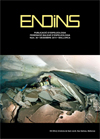| Registro completo | |
|---|---|

Accedir a l'exemplar |
|
| Títol: |
 Descripció de la mandíbula, els segons molars i les incisives de Muscardinus cyclopeus Agustí, Moyà- Solà & Pons-Moyà, 1982 (Mammalia, Rodentia, Myoxidae)
Descripció de la mandíbula, els segons molars i les incisives de Muscardinus cyclopeus Agustí, Moyà- Solà & Pons-Moyà, 1982 (Mammalia, Rodentia, Myoxidae) |
| Autor/es | Quintana Cardona, Josep |
| Matèries en català: | Paleontologia Pliocè ; Menorca ; Geologia. |
| Matèries en anglès: | Paleontology Pliocene ; Minorca (Spain) ; Geology. |
| Resum-Abstract: | [cat] El muscardí gegant del Pliocè de Menorca (Muscardinus cyclopeus Agustí, Moyà- Solà & Pons Moyà, 1982) és, juntament amb el conill gegant de Menorca (Nuralagus rex Quintana, Köhler & Moyà-Solà, 2011), l’únic mamífer no volador present en els jaciments càrstics de Punta Nati (Ciutadella de Menorca) i un dels mamífers menys coneguts de les faunes vertebrades endèmiques del Neogen balear. De fet, la descripció original de M. cyclopeus es realitzà tan sols a partir de nou dents, entre les que no hi havia ni els segons molars (m2, M2) ni les incisives. A més d’aquestes dents, es descriuen les primeres restes mandibulars. Malgrat el seu estat de conservació, s’ha pogut constatar que la mandíbula de M. cyclopeus mostra un marge interalveolar (hiatus) proporcionalment més curt i ample que el seu parent continental, Muscardinus avellanarius (Linnaeus, 1758). Aquest caràcter pot estar relacionat amb l’evolució insular o bé, tractar-se d’un caràcter primitiu conservat en condicions d’insularitat. [eng] The Pliocene giant Minorcan dormouse (Muscardinus cyclopeus Agustí, Moyà-Solà & Pons-Moyà, 1982) is, together with the giant Minorcan rabbit (Nuralagus rex Quintana, Köhler & Moyà- Solà, 2011), the unique non flying mammal present in the karstic deposits of Punta Nati (Ciutadella de Menorca) and one of the lesser known mammal from the Neogene endemic terrestrial vertebrate faunas of the Balearic Islands. The original description of M. cyclopeus was made, in fact, from ten teeth only, among which no was any second molar (m2, M2) and incisor. These teeth are, for the first time, described in addition with the first mandibular remains. Despite its poor condition, the mandible shows a proportionally shorter and wider interalveolar margin (hiatus) than their mainland relative Muscardinus avellanarius (Linnaeus, 1758). This character may be related with insular evolution or a primitive character retained under insular conditions. |
| Font: | Endins 2014, Vol. 36, pp. 125-130 |
| Identificador: | e-ISSN: 2386-7299 |
| Tipus de document: | info:eu-repo/semantics/article ; info:eu-repo/semantics/publishedVersion |
| Avís legal: | all rights reserved ; info:eu-repo/semantics/openAccess |